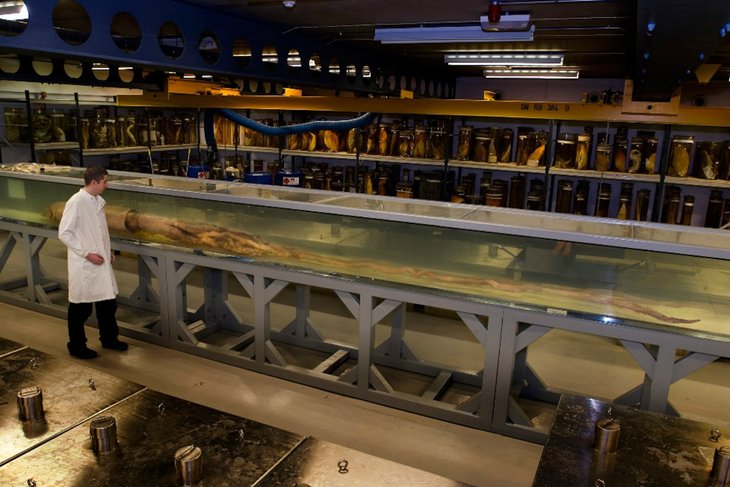From folklore to science: UP researchers help decode genome of giant squid
Article

Scientists from Porto are part of the team that was able to sequence, for the first time, the full genome of the giant squid, shedding some light on the species' life in deep sea.
In 1857, the Danish naturalist Japetus Steenstrup unveiled the tales of dragged ships in the ocean, to the existence of a giant squid: a cephalopods with elongated bodies and ten arms, believed to be 13 meters long and more than 900 kilos.
Now, 160 years later, an international team of scientists, which includes Agostinho Antunes and André Machado, of the Interdisciplinary Centre of Maritime and Environmental Investigation of the University of Porto (CiiMAR) decoded the genome of this gigantic squid, an animal that still feeds our deepest nightmares or fantasies.
The scientist from Porto collaborated in the suty "A draft genome sequence of the elusive giant squid, Architeuthis dux", which has been recently published in the scientific magazine GigaScience.
"These new results may unveil some of the issues concerning evolution matters on this species", explains Rute da Fonseca, Associate Professor of the Centre for Macroecology, Evolution and Climate of the GLOBE Institute of the University of Copenhagen, and in charge of the research.
Agostinho Antunes, leader of the Bioinformatics and Evolutionary Genetics of CiiMAR-UP and co-author of the article, enhanced that "peculiarities of the giant squid genes are a way forward regarding future research."
Despite the many challenges, the quality of the recently sequenced genome showed as one of the best studies among the cephalopods available and it is key for the next steps to unveil the evolution of giant squids from a genetic basis related to size, growth and age.